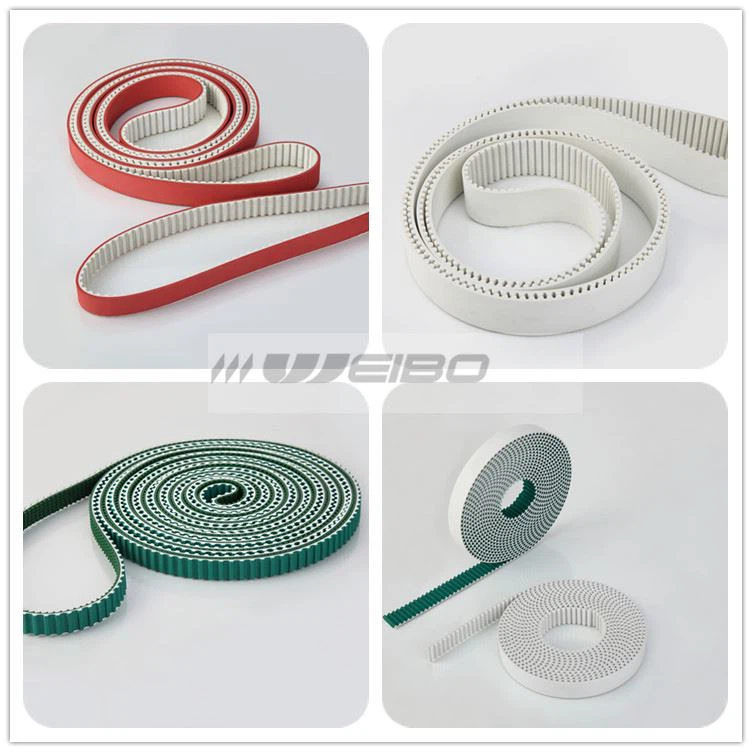Features
● High resistance to oils, greasers, ageing, hydrolysis, ozone
● Highly flexible with longitudinal toughness to ensure perfect tooth meshing
● Superior wear and abrasion resistance
● Low vibrations and reduced noise levels
● It resist partial acid and alkali corrosion
● Good size stability
Specification
PU TIMING BELT | |||
Section | Pitch (mm) | Tooth Height (mm) | Belt Thickness (mm) |
HTD3M | 3.00 | 1.30 | 2.20 |
HTD5M | 5.00 | 2.20 | 3.70 |
HTD8M | 8.00 | 3.60 | 5.60 |
HTD14M | 14.00 | 6.43 | 10 |
STD5M | 5.00 | 1.91 | 3.40 |
STD8M | 8.00 | 3.05 | 5.40 |
RPP5M | 5.00 | 2.00 | 3.80 |
RPP8M | 8.00 | 3.20 | 5.40 |
RPP14M | 14.00 | 6.00 | 10.00 |
L | 9.525 | 1.90 | 3.60 |
XL | 5.08 | 1.27 | 2.30 |
H | 12.70 | 2.29 | 4.30 |
XH | 22.225 | 6.35 | 11.20 |
T5 | 5.00 | 1.20 | 2.20 |
T10 | 10.00 | 2.50 | 4.50 |
AT10 | 10 | 2.5 | 5.00 |
AT20 | 20 | 5.00 | 8.00 |
Applications
Auto-door, office automation equipment, vending machines, machine tools and pumps, textile machines, paper manufacturing machines, printing machinery, medical equipment, optical instruments, food processing equipment, packaging machinery, robotics and plotters.
Production Details

① PU timing belt can be specially processing:
a. Add PAZ
b. Add PAR
c. Cover linatex or silicone on the back
d. Add cleats in belt back
② PU joint belt is made of open ended timing belt,over 1 meter length can be connected according to different teeth number requirements.
PU Timing Belt Failure Analysis
① Snapped Belt
Cause:
Overload
The inertia of the driven pulley is too much
The diameter of the pulley is too small
The initial tension is too much
Folding and twisting of the belt for improper operation
The shock load is too much
The belt climbs to the protective ring
Broken pieces or other matters fall into the driving device
Solutions
Check the design, choose the correct belt width
Choose the correct pulley
Redesign numbers of the meshing teeth
Adjust the proper initial tension
Careful operation when storing and transporting
Prevent unexpected accident from happening, change the design
Adjust the parallelism of the axis, check the protective fender
Clean the pollutant and check the protective feeder
② Noise
Cause:
Overload
The initial tension is too much
The pulleys are not parallel
The diameter of the pulley is less than the belt width
Belt can't mesh well with the belt teeth
Solutions
Change the design
Adjust the initial tension
Adjust the parallelism, make it accurate when installing
Check the design
Check the belt and pulley










